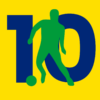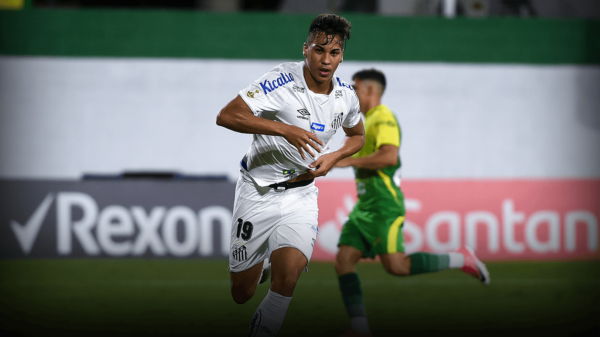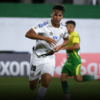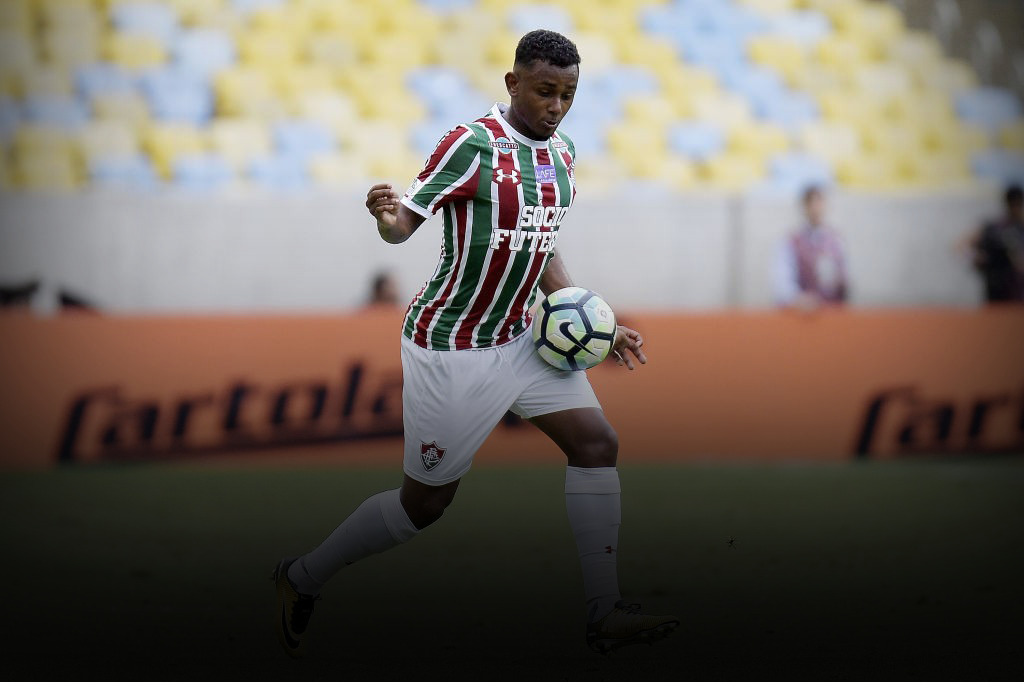Anderson Moura writes a detailed scout report about the Brazil and Monaco left back, Jorge.
Some say that the left-back position is suffering a global crisis. It is hard to find universally accepted world class names and, though the likes of Marcelo (Real Madrid), David Alaba (FC Bayern) and Jordi Alba (Barcelona) represent the best of this position, things are not how they used to be some years ago. But the next Brazilian generation is willing to change this scenario with a huge internal competitiveness. If Marcelo and Filipe Luís (Atlético) drops their rhythm, Alex Sandro (Juventus) and Alex Telles (Porto) are good options for now, and the country also has a bunch of kids that can go over them in the next few years. Aside from popular names like Wendell (Bayer Leverkusen), Douglas Santos (Hamburger SV) and Zeca (Santos), there is another wonder kid: Jorge, who now plays for AS Monaco.
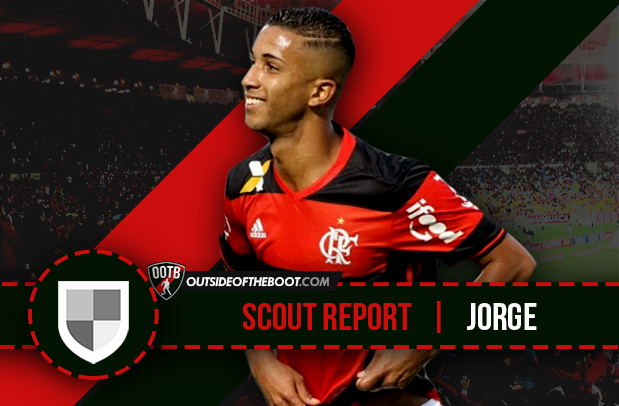
Who is Jorge?
Born on 28 March of 1996, Jorge was a part of Flamengo from the time he was 11 years old until last month. He earned his place in Flamengo’s first 11 after a great performance in the 2015 U20 World Cup, in New Zealand, where he scored a beautiful goal against Senegal, was elected the best left-back of the competition and helped Brazil earn the silver medal. Back in Rio de Janeiro, the player easily conquered the supporter’s affection thanks to his consistency and regularity, putting names like Anderson Pico and Pablo Armero – who had just played the 2014 World Cup for Colombia – on the bench. His first professional goal was against Nautico and was responsible for Flamengo’s advancement on Brazilian Cup.
Jorge was on the initial list of 35 names to represent Brazil at the Rio Olympic Games, but he was not able to stay in the group after the final cut that only left 18 players. But what could have left a scar on the player’s good run actually made him focus on his daily work even more.
In 2016 two things helped him improve even faster. When the coach Muricy Ramalho had some health problems, he was replaced by Zé Ricardo, with whom Jorge had already worked for some years on the young teams. Besides that, the youngster was also embraced by Juan, a veteran defender who played for Bayer Leverkusen, Roma and the Seleção 82 times. With constant tips and advice from the duo, Jorge improved his defensive skills and was elected the Brazilian Serie A 2016’s best left-back. The player himself admitted that his main goal of the season was to evolve his tactical understanding, mostly the coordination with his fellow defenders, so as to not leave any gaps and avoid the opponents exploring unmarked zones.
Talent Radar Accolades
So much success attracted the attention of European teams and on January 30th AS Monaco announced the deal and a five year contract. In Brazil, the hottest clue was that Pep Guardiola was scouting the boy to rejuvenate his Manchester City, but the French side was faster and grabbed the player five days after his first cap with the Brazilian national team, against Colombia.
What is his style of play?
Some men just freak out in high pressure situations, but some men can see the world burn and still get enough focus to do the right things, and Jorge definitely is part of the second group. In Europe, teams tend to use high pressure with their wingers to disturb the rival’s initial passes from defense, but this will not be a problem for the Brazilian during his adaptation phase. As he played a lot of futsal on his childhood, he got used to thinking and act quickly.
The ‘Monégasques’ are used to powerful full-backs like Lilian Thuram, Patrice Evra, Eric Abidal and Maicon, that look more like locomotives. Jorge, however, is far from this kind of physical force, though he has better technique than his predecessors.
Jorge also has the ability to adapt to one of Guardiola’s most used concepts at Bayern München: the ‘lateriores’. This is a Spanish name given to the full backs who make progressions towards the center, and not to the flanks, leaving this for the wingers and enjoying the empty spaces that the original midfielders leave when they move to help the wingers. AS Monaco sometimes use similar tactics, and Jorge will find partners with similar technical features. Fabinho played originally as a right-back, but has adapted very well as a defensive midfielder under the Portuguese coach Leonardo Jardim.
What are his strengths?
It’s common to see full-backs throwing away crossing opportunities, but Jorge does not waste ball possession so frequently. If he cannot find the best action at the first attempt, he has the calmness to look for other options even when pressed by a rival, and protect the ball very well without getting uncomfortable. When he chooses to cross, his numbers are decent (21 accurate crosses from 80 tried, a 26,3% rate) and he also misses very few passes, being, indeed, a very technical player.

via footstats.com.br
We already talked about how Jorge got better in the defensive phase of the game under the influence of the likes of Juan, and there is no better proof than his tackling numbers in the Brazilian Serie A. The boy made 85 successful tackles in 102 attempts. An impressive mark of 83.3% in 32 matches. However he lacks the muscle to face burly wingers, his height (1.84m) and his marvelous sense of anticipation make him a great asset for the central defenders, intercepting a bunch of passes and stopping the other team’s plays before they get too close to his goal.
Most young Brazilian full backs normally possess a great repertoire of mesmerizing dribbles. Jorge, however, doesn’t like to do his tricks every game, though he sure is capable of some skillful movements, like this one, but hardly on his own half of the field.
2016 was also a year where Jorge discovered he could try a few long and medium range shots. The goals against Ponte Preta and Figueirense were amazing stunners.
https://www.youtube.com/watch?v=NTYZFqT4BtA&feature=youtu.be&t=1m47s
What are his weaknesses?
His cold blooded personality may result in a lack of intensity sometimes. When the game requires a higher voltage from the players, Jorge can struggle to adapt to the faster rhythm. Also, when he noticed his backup at Flamengo was much worse than he was, Jorge got into a slight comfort zone that sometimes led to a slight drop in performance. It was only for a short period of time, but it was useful to show that he can improve his motivation and mental aspects.
Jorge has surely learned the ‘mano a mano’ shortcuts to stop the attackers, with timing and accuracy in his tackle, but without the ball his positioning can be a lot better. He is slow to regain his position during transitions.
Some physical work that can also be improved is his speed. Monaco has an incredible offensive team and its fast pace is a trademark. To help his comrades on the attack, Jorge has enough potential through his cleverness, but he has to be faster. Yet this will be no ‘big deal’ to Leonardo Jardim. The coach has successfully worked on the evolution of players like Anthony Martial, Bernardo Silva, Geoffrey Kondogbia, Layvin Kurzawa, Thomas Lemar and Yannick Ferreira-Carrasco in the last few years. It’s fair to say that Jorge’s new home is a perfect place to correct some errors and that he can be Jardim’s new jewel.
Read all our scout reports here
- Brasileirão U-23 Young Players’ Team of the Season 2017: Talent Radar - February 6, 2018
- Exclusive Interview: Gabriel Brazão, Brazil’s gentle giant and U17 World Cup star - December 7, 2017
- USA out of the World Cup: What happened and what next for the Soccer Nation? - November 10, 2017






















































